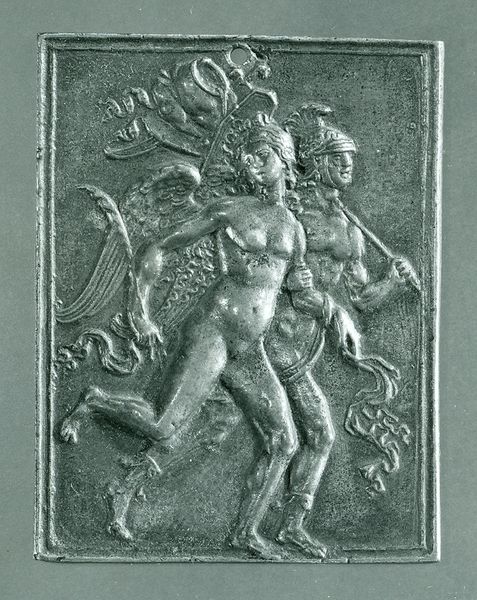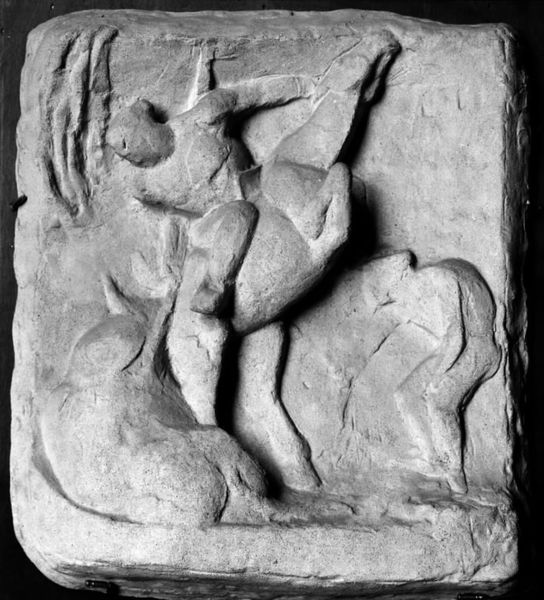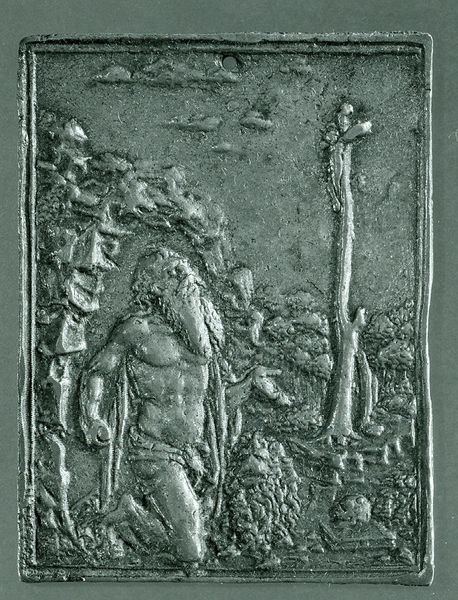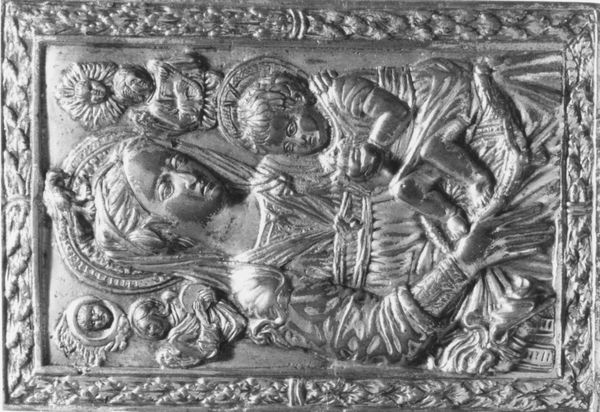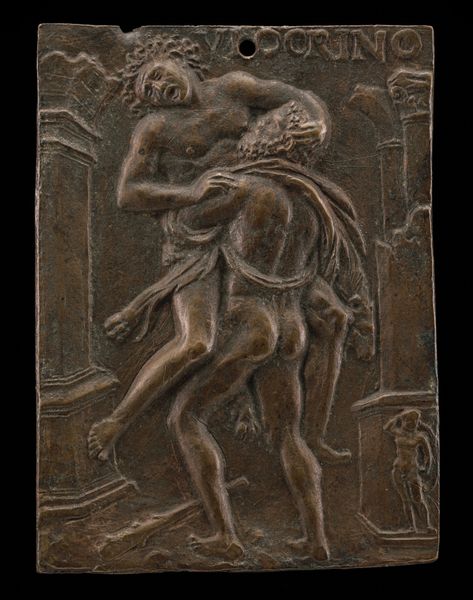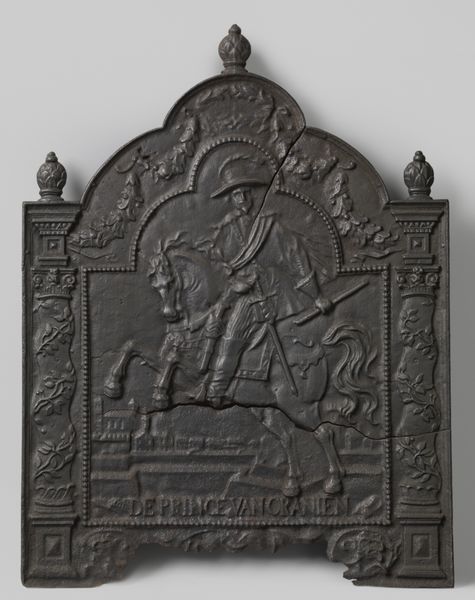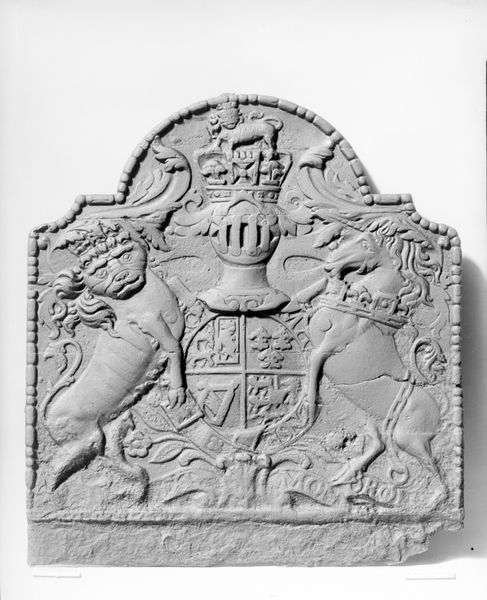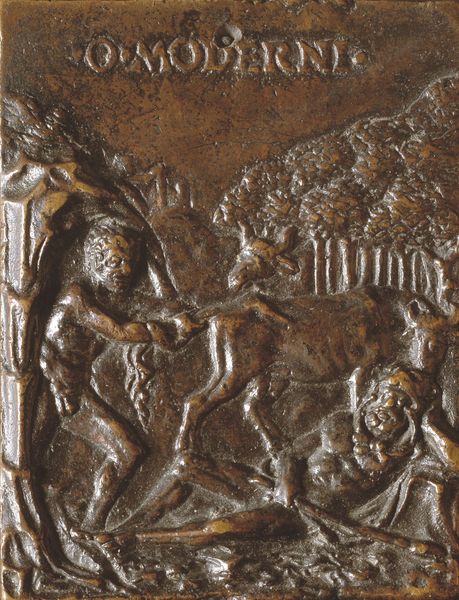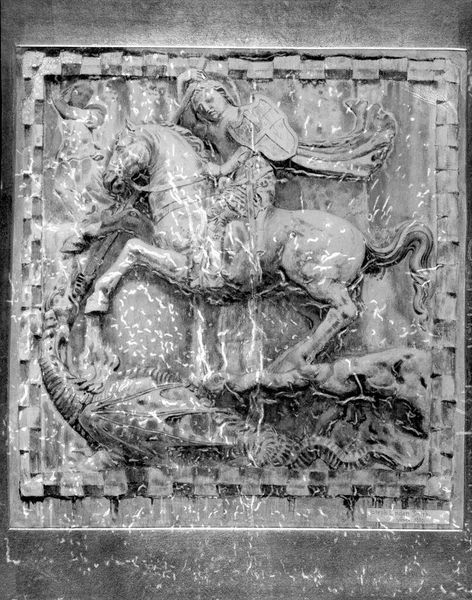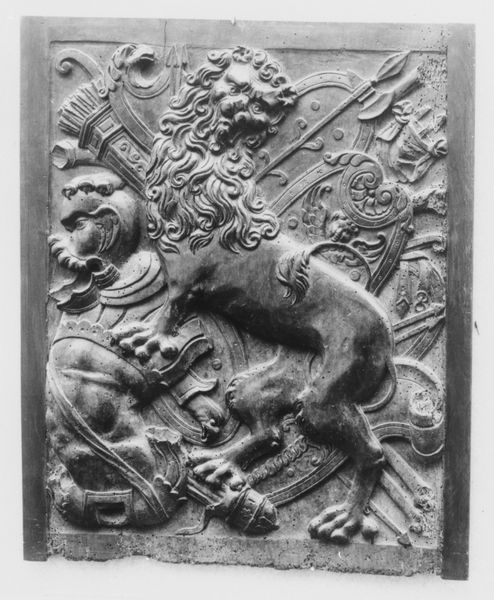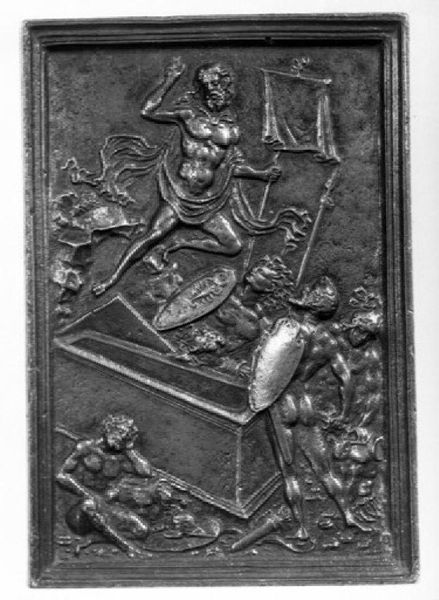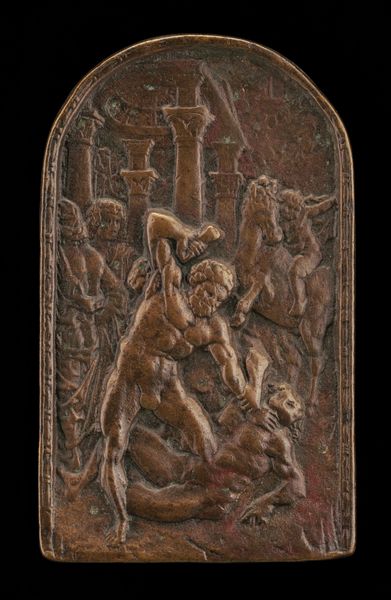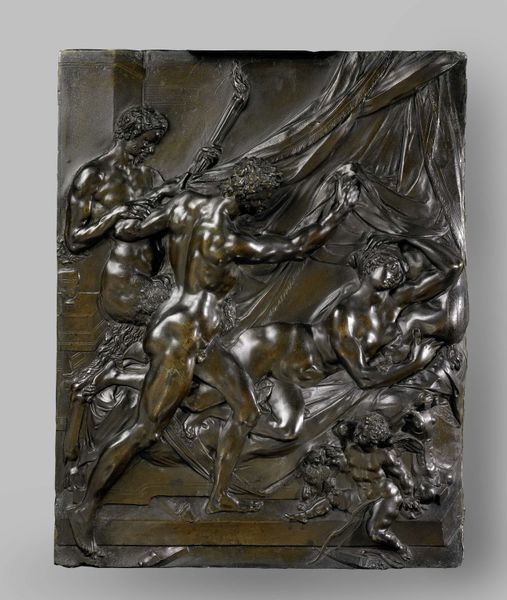
silver, metal, relief, sculpture
#
portrait
#
silver
#
metal
#
sculpture
#
relief
#
landscape
#
figuration
#
11_renaissance
#
sculpture
#
history-painting
#
erotic-art
Dimensions: 18.3 cm (height) x 12 cm (width) x 0.5 cm (depth) (Netto)
Curator: This artwork, created in the 16th century, is titled "Karl V til hest" and depicts Charles V on horseback. It’s rendered in silver relief and resides here at the SMK, Statens Museum for Kunst. Editor: My first thought is: austere power. The starkness of the silver, the rigid posture of the rider… it projects a sense of unyielding authority, crafted in metal. I can’t help but wonder about the social implications and process required to achieve such striking power. Curator: Absolutely. Consider the historical backdrop: Charles V was a towering figure, ruling over a vast, diverse empire. This piece speaks directly to his carefully cultivated image as a strong, divinely appointed leader, and serves to situate the subject within his own history. What are we meant to think of him and of power in the 16th century? Editor: And think of the silversmith's labour! The sheer effort to manipulate this metal into such intricate detail is impressive. The landscapes, the horse's harness… what workshops might have been involved? Whose hands shaped this symbol of power, and what did they gain from it? It encourages thinking about the hierarchy of labour involved in creating this piece. Curator: That’s an important layer. The landscape behind Charles V isn’t merely decorative, it's carefully constructed. I interpret the serene hills and suggestion of his dominion over those landscapes, creating a visual argument for his inherent right to rule and how these are often fantasies or social constructions that reinforce inequality. Editor: And the choice of silver itself— beyond its aesthetic appeal, it represents wealth, access, and, control of resources. Did it reflect the emperor's access to precious metals, and subsequently act to enhance his image of almost unachievable prestige? Curator: Precisely. Furthermore, pieces like this reinforce how power is constructed. In this sense it's both artistic representation but also an idealogy. This work presents Charles as a paragon of Christian European authority – a legacy viewed with increasing skepticism through our current lens of post-colonial perspectives. Editor: Looking at this from a more grounded point of view, the silver is more than luxury, it is something mined from the earth. Thinking through it in this way it becomes material through exploitation of people and environments. The work becomes both image of power and artifact of power. Curator: I agree. By situating this portrait within a history of both the powerful and the laboring class we confront complicated issues. Looking closely brings both Charles and his era into complex focus. Editor: It really puts into perspective how art and material are so closely intertwined with the workings of the world at large. Thanks for helping to guide our understanding!
Comments
No comments
Be the first to comment and join the conversation on the ultimate creative platform.
